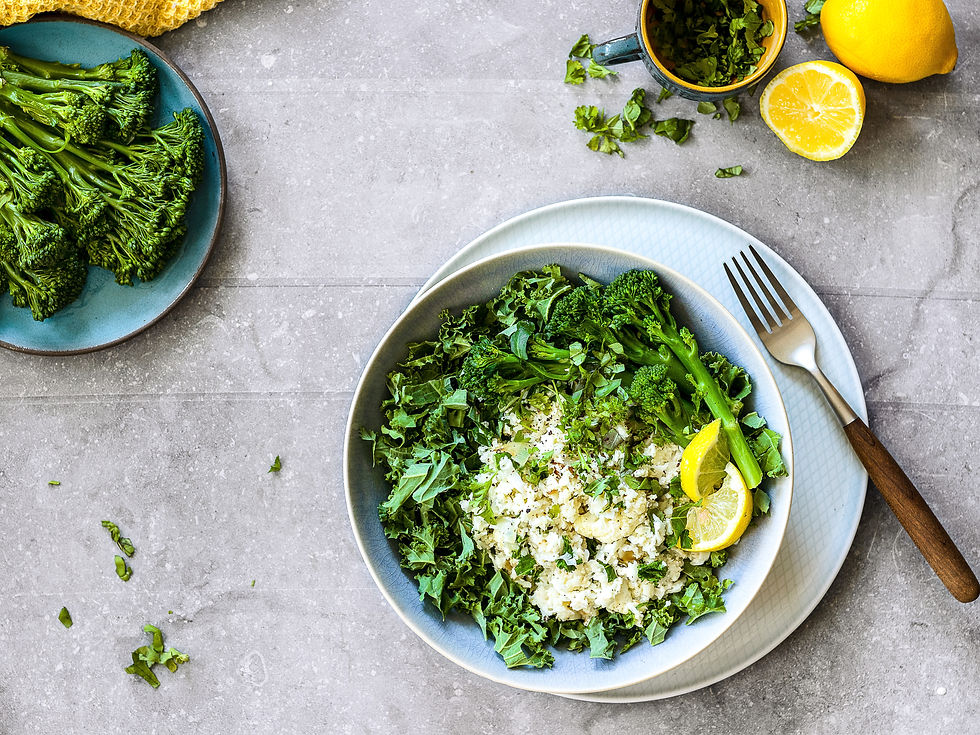Are Your Beauty and Cleaning Products Toxic?
- Sally Bolinger

- Nov 20, 2019
- 4 min read
Toxins are all around us and your lifestyle is often a big culprit for increasing the amount that you’re exposed to. We often worry about the food we’re putting in our bodies and pay a lot less attention to what we’re putting on our skin and exposing ourselves to when we clean our homes. Personal hygiene products, cosmetics and cleaning products are full of chemicals and other toxins that have scary effects on health and wellbeing. Taking steps to reduce your exposure to toxins by swapping toxin laden products for more natural alternatives can go a long way towards avoiding the health risks associated with toxins.
Bathroom Products/Toiletries
A lot of personal hygiene and toiletries contain nasties, which is scary stuff when you consider how many products the average person uses. Here are just a few of the toxins you’re being exposed to:
Formaldehyde is often produced as a byproduct of ingredients found in deodorants, liquid soaps and shampoos.
Phthalates are an endocrine disruptor and are known to be able to mimic estrogen and other hormones, which can affect lots of processes in the body. You’ll find phthalates in many shower gels, shampoos, hairsprays, perfumes and nail polishes.
Sodium Lauryl Sulphate is found in most products that foam and lather and is a common culprit for skin irritation. Its effects could be much worse though and there are fears that it could be carcinogenic.
Toluene is featured in a lot of hair gels, hairsprays and perfumes. It’s a neurotoxin that mimics the effects of estrogen. It’s also linked to liver damage and asthma.
Propylene glycol is another common ingredient in toiletries. It’s also used in industrial antifreeze!
Triclosan is another endocrine disruptor. Thanks to its antibacterial qualities, it’s included in deodorants, hand soaps, toothpaste, mouthwash and even vaginal washes. It can potentially break down into dioxin, a carcinogenic.
How to avoid toxins:
There are lots of natural and organic cosmetics brand hitting the shelves and they’re a great alternative to traditional cosmetics. Check the labels carefully though as “natural” doesn’t necessarily mean toxin free. What you really want to look for is “clean beauty” brands and products. For example, clean beauty lipsticks are usually made from a range of natural oils, while powders can be made from cornstarch.
Makeup/Cosmetics
Lots of your favorite cosmetics contain a whole host of toxins.
Some of the big ones include phthalates and Triclosan. These are known to be endocrine disruptors that mimic the effects of hormones such as estrogen. According to research from the University of Maryland, phthalates can cause reproductive abnormalities and stunt testosterone levels and fertility in men. For women, they’ve been linked to an increased risk of premature deliveries.
BHA and BHT are used as preservatives so that your cosmetics have a longer shelf life. They’re also endocrine disruptors and are linked to skin allergies.
If you’re already aware of the risk of toxins in your cosmetics, it’s probably because of parabens. These are also used as preservatives and they can penetrate the skin very easily. So much so that traces of them have been found in breast cancer tissue! It’s thought that they can affect reproduction, the nervous system and the immune system so their effects could be widespread.
A few other nasties that can lurk in your make-up:
Formaldehyde can be released as a byproduct of some of the ingredients in cosmetics.
Octinoxate is an endocrine disruptor that is often added to foundations.
Carbon black is found in a lot of eyeliners and has been put forward as a potential carcinogenic.
Siloxanes are often added to cosmetics to soften and moisturize but they’re another endocrine disruptor.

How to avoid toxins: Ideally, you want to be using products with these nasties as little as possible. Have a good look at the ingredients before you buy and avoid anything that you’re not sure about. There are lots of natural beauty alternatives on the market these days but check the labels as they can still contain a few toxins.
Cleaners
Cleaning products are another common culprit for toxins, especially chemicals. This is a big worry when you consider that a lot of the time, you’re cleaning in areas with little ventilation such as bathrooms. This makes it a lot more likely that you’ll inhale chemicals from the products.
A few things to think about when it comes to cleaning products:
Fragrances often added to laundry detergents and fabric softeners can irritate the respiratory system and are linked to asthma.
Diethanolamine (DEA) and triethanolamine (TEA) can become carcinogens.
2-butoxyethanol is commonly found in window and glass cleaners and multi purpose cleaning sprays. It often causes a sore throat after it’s sprayed but it’s also linked to allergies and asthma.
Studies have shown that regular exposure to cleaning products can potentially reduce lung function.
How to avoid toxins: Make your own cleaning products with natural ingredients such as vinegar, baking soda and essential oils. It does require a bit more in the way of elbow grease but you get great piece of mind that you’re not risking your health.




Comments